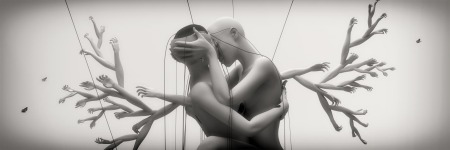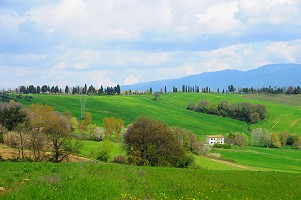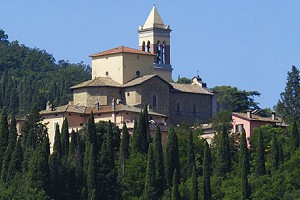Todi (PG) - 
Saturday, August 30, 2014 at 18:00, at its headquarters in Todi (Corso Cavour 57 to
59), BRIC Art opens the exhibition In the silence between two waves: abstraction and simplicity
in Chinese contemporary art.
BRIC Art, a Chinese company that is dedicated to promoting contemporary art in the country
Asia, which already operates in Beijing one of the most important exhibition of the
capital, has decided to focus on Italy, setting up an office in Todi (The BRIC Art
Space), which will host the exhibition until 15 October.
In 1991, RS Levine, Professor of Architecture at the University of Kentucky (USA)
Todi pointed to as a model of "sustainable city", both for its size, and also for
its ability to continually re-invent itself over time. And it is precisely
This philosophy of life that is linked BRIC Art, identifying the location in the city of Todi
to establish his second exhibition space, after the one in Beijing.
Chinese artists, including BRIC Art has selected the works for the exhibition of Todi, are Cao
Jigang, Guang Jingjing, Sun Ce and Tian Xiaolei. E 'was also included a subsection
devoted to three young artists from the Faculty of Arts of Tsinghua University
Beijing: Chen Yu, Sun Wen and Moqing Le.
"Our goal - he explains the Artistic Director of BRIC Art, Philip Fabrocini - is
to offer to scholars, collectors and, in general, to a wider audience a vision
including an artistic endeavor that is currently poorly known in Italy
but that is attracting a growing interest in the rest of Europe, the United States and,
of course, in Asia. "
The poet Zhao Ye, recently wrote about his own country, China: "(...)
we face the situation can be summarized in the fact that the nation survives,
but the earth is dead. Our civilization has been outraged many years ago, now
abandoned at the sunset with only the wind that blows from the west. " This statement is
crucial in order to understand the most of the works that have been selected
for this exhibition. Today, China is faced with materialism and a
consumerism increasing, together with a process of industrialization
wild, which has polluted and devastated mortally surroundings. In addition to,
in this drive towards "modernization", there seems to be no sensitivity in
distinguish what is "old" compared to what is simply "old" with the
result that buildings of historical importance rather than monuments also important
were razed to make way for huge buildings, shopping areas or
residential, industrial sites. The story is increasingly absent from China, its nature is
increasingly devastated. These are the problems with which the artists selected for the exhibition
Todi comparing the disappearance of nature together with the disappearance of
memory of the past.
Their art is essentially and formally distant style of Westernizing
Most of Chinese contemporary art, at least one which has received the
more attention from the western world. We're talking about authors such as Fang Lijun,
Wang Guangyi and Yue Minjun, well-known in the West. There are many features of the
works soon exposed to Todi that make them extremely attractive for
not to mention exciting. All these artists love to feed their ideas taking
moves from the philosophical tradition and spirituality of their ancient culture. All
These artists prefer to wonder about the ultimate meaning of their existence in order
to defend themselves from false appearances resulting from materialism increasingly dominant.
All of them look to the process of artistic creation as a process of self-awareness,
an endless and patient examination of the constant stream of thoughts,
perceptions and emotions that constitute our lives. It is the practice of sati
Buddhist term that the translation "self-awareness" does not make it fully
justice. The word Pali sati, in fact, refers to a process of retention of the past,
to the memory of the past.
This is the reason why BRIC Art has decided to convey the works of these artists
in Europe. "In fact - concludes Fabrocini - we are convinced that they represent the future
Chinese contemporary art. They interpret this extraordinary movement from
past to present and from present to future, in conjunction with the movement from the local to
global and vice versa, which makes the art really contemporary ".
For contacts:
BRIC Art Space
Alessandra Pierelli | Tel. +39 347 3647939 | e-mail: pressconference@thebricart.com
Maria Virginia Leonori | Tel. +39 349 3627233 | e-mail: virginia@thebricart.com















